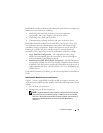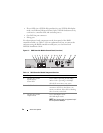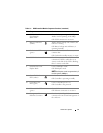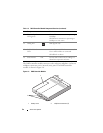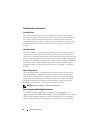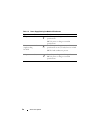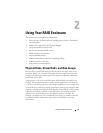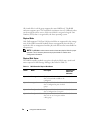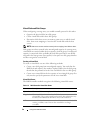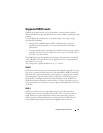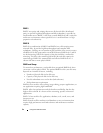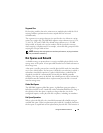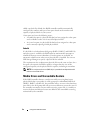
Using Your RAID Enclosure 27
Using Your RAID Enclosure
This section covers the following information:
• Basic concepts of a RAID solution including physical disks, virtual disks,
and disk groups
• RAID levels supported by MD Storage Manager
• Hot spare operations and rebuilds
• Media errors and unreadable sectors
• RAID operations and features
• Advanced RAID features
• Hardware redundancy and failover including cabling
• Updating enclosure firmware
• Best practice recommendations
Physical Disks, Virtual Disks, and Disk Groups
Physical disks in your RAID array provide the physical storage capacity for
your data. Before you can begin writing data to the storage array, you must
configure the physical storage capacity into logical components, called disk
groups and virtual disks.
A disk group is a set of physical disks upon which multiple virtual disks are
created. The maximum number of physical disks supported in a disk group
is 30. You create disk groups from unconfigured capacity on your storage array.
A virtual disk is a partition in a disk group that is made up of contiguous data
segments of the physical disks in the disk group. A virtual disk consists of data
segments from all physical disks in the disk group. Virtual disks and disk
groups are set up according to how you plan to organize your data. For
example, you might have one virtual disk for inventory, a second virtual disk
for financial and tax information, and a third virtual disk for customer
information.



